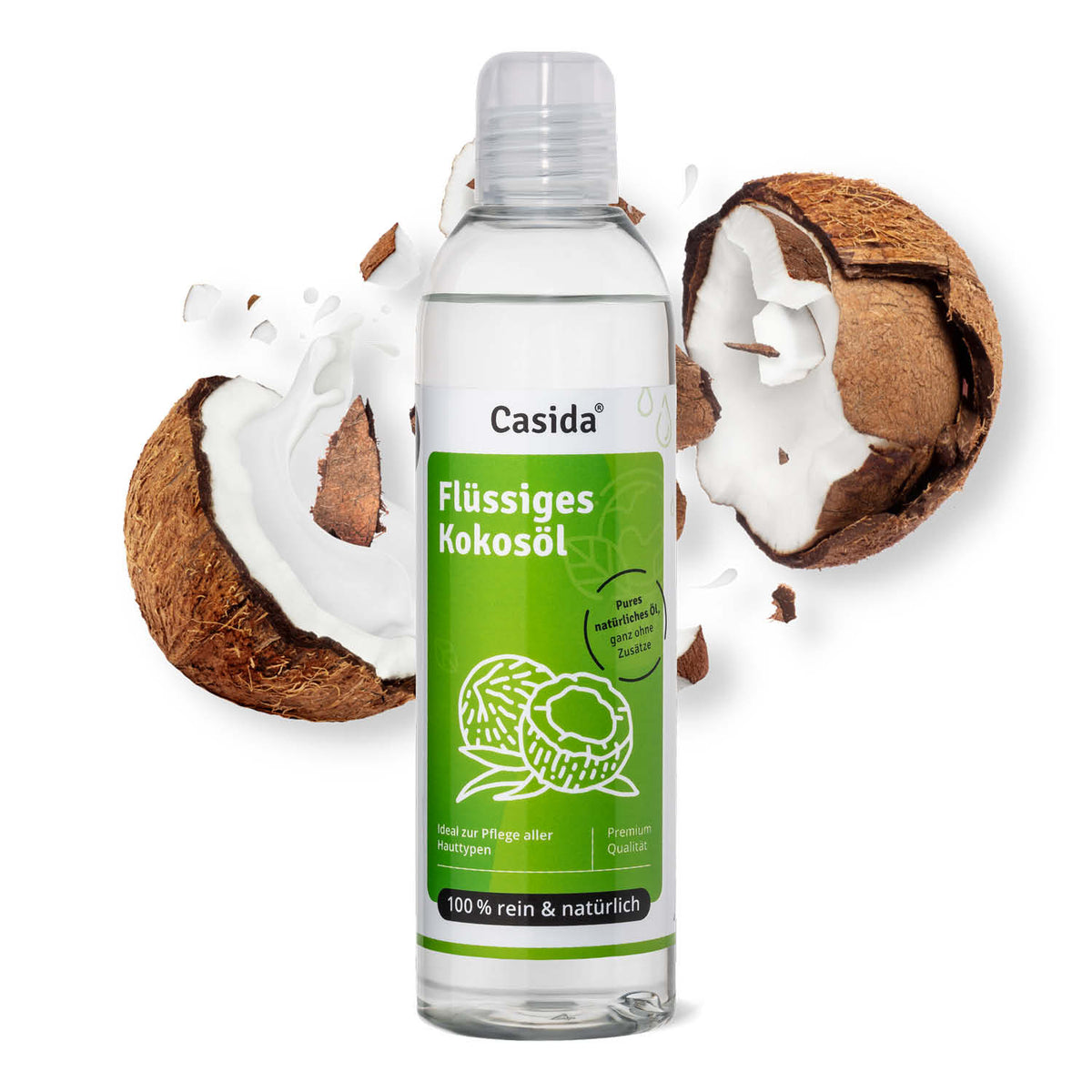Oil pulling is a traditional Ayurvedic method for cleansing the mouth and is also known as oil chewing. It is not only used for dental and oral care, but is also a popular detox method as it helps to detoxify the body. We explain how it works and present the best oils for oil pulling.
Table of contents
How does oil pulling work?
Oil pulling is rinsing the mouth with vegetable oils, typically sesame oil or coconut oil. It must be performed for a sufficient amount of time to stimulate detoxification processes - usually 15 to 20 minutes. Here is a guide on how oil pulling works:
- Step: take a tablespoon of high-quality, cold-pressed oil of your choice. Traditionally, sesame oil is often used for this, but you can also use coconut oil, sunflower oil or olive oil.
- Step: Pour the oil into your mouth, but don't swallow it. Make sure you have enough to rinse with for about 20 minutes.
- Step: Tilt your head back slightly so that the oil reaches all areas of your mouth.
- Step: Start moving the oil back and forth in your mouth, similar to a mouthwash. Pull it through your teeth, swish it around your tongue and let it flow through your mouth. Be gentle so as not to strain your jaw muscles.
- Step: Keep the oil moving while you keep it in your mouth for about 15-20 minutes. If you are just starting out, you can begin with 5-10 minutes and gradually increase.
- Step: After the specified time, spit the oil into a garbage bag or into the trash. Avoid spitting the oil into the sink as it can build up over time and cause blockages.
- Step: Rinse your mouth thoroughly with warm water and then brush your teeth as usual.
It is recommended to do oil pulling once a day, ideally in the morning before breakfast. It is important to note that oil pulling is not an alternative to normal dental care. It should be practiced in addition to regular brushing, flossing and a visit to the dentist.
Oil pulling - what benefits does it have for the teeth?
Regular oil pulling is said to improve oral health - especially gum health - and it gives you fresh breath. The antibacterial agents in the oil used help to reduce plaque and fight bacteria in the mouth. Oil pulling can help reduce plaque, gingivitis and bad breath. Some studies have shown that rinsing with oil can be as effective as mouthwash in reducing plaque and gingivitis.
Oil pulling - what benefits does it have for the body?
Oil pulling is practiced in some traditional systems of medicine, particularly Ayurvedic medicine, and has some potential benefits. However, it is important to note that the scientific evidence for these benefits is limited and the effects are more traditional. In addition to improved oral health, here are other potential benefits of oil pulling:
- Detoxification: oil pulling is also considered a detoxifying method. By rinsing the oil in the mouth, toxins and bacteria are supposed to be bound and spit out.
- Skin benefits: Some people report improved skin appearance and relief from skin problems such as acne, eczema and psoriasis as a result of oil pulling. This is believed to be due to the detoxification of the body and the reduction of inflammation in the body.
- Relaxation and stress relief: Oil pulling can also have a relaxing and stress-relieving effect for some people. It can help to relax as part of a morning routine.
The best oils for oil pulling
High-quality, cold-pressed vegetable oils are used for oil pulling. Here are some popular options:
- Sesame oil: sesame oil is often recommended as a mouth pulling oil as it has antimicrobial properties and can contribute to the health of teeth and gums.
- Coconut oil: Coconut oil is another commonly used oil for oil pulling. It has antimicrobial properties and a pleasant taste. It is also said to strengthen the gums and whiten the teeth.
- Sunflower oil: Sunflower oil is another option for oil pulling. It is rich in vitamin E and has anti-inflammatory properties.
- Olive oil: Olive oil can also be used, although it has a strong flavor that not everyone likes. However, it has anti-inflammatory properties and is rich in antioxidants.
Benefits of Mouth Healthy Aromatherapy Oil
To combine the benefits of several cold-pressed oils, we at Casida have developed a special oral oil: The Mouth-Healthy Aroma Care Oil with oils from sea buckthorn pulp, peppermint, tea tree, rose oil and clove in almond and sesame oil. It cleanses and soothes irritated oral mucosa, helps with gum problems and dry mouth.
The benefits of Mund-Gesund Aroma Care Oil
- Soothing oil blend for the care and moisturizing of dry mucous membranes
- Composition of valuable natural oils from sea buckthorn pulp, peppermint, tea tree, rose oil and clove in almond and sesame oil
- Ready-to-use mixture, safe to use
- For oil pulling, add 3 to 4 pumps of Mund-Gesund Aroma Care Oil to a teaspoon of any carrier oil and swish in the mouth for around 15 minutes, then spit out and rinse.
- Can also be applied with a mouth swab or used in a little water as a mouth rinse
- Vegan and free from unwanted additives
- Ideal for people in need of care: Suitable for the expert standard for oral health in care
Sources & further links on the subject of oil pulling: https://www.ayurveda-journal.de/gandusha/








